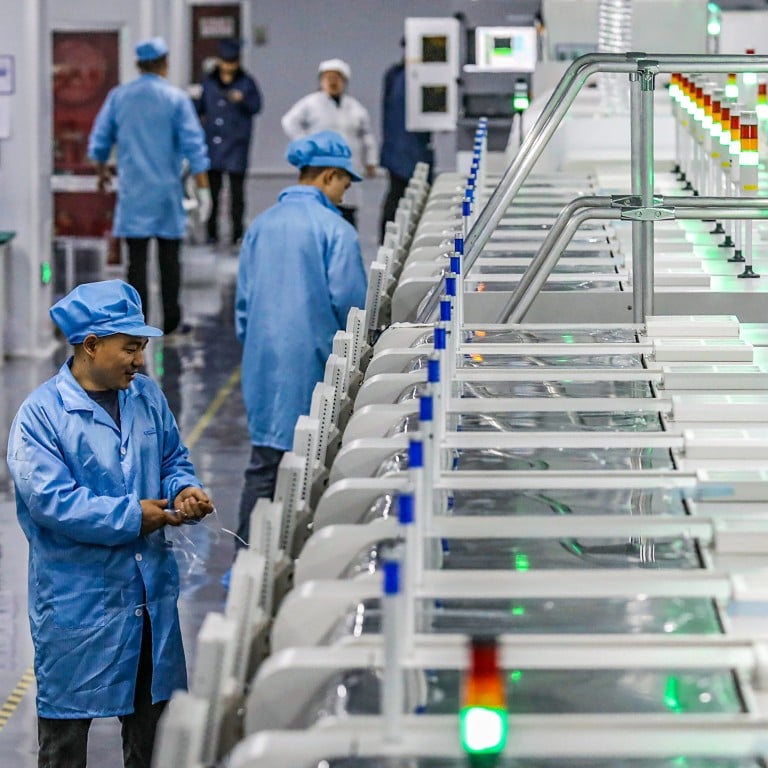
China’s factory activity hits 1-year high, adding to signs economic recovery is picking up pace
- Official manufacturing purchasing managers’ index (PMI) rebounds to 50.8 in March, crossing into expansion territory after five months of contraction
- The data extends upward swing by headline indicators, but scepticism about world’s No. 2 economy persists over property woes and local government debt
The figure beat the market estimate of 49.9 and returned above the watershed level of 50, which indicates expanding activity, ending five consecutive months of contraction.
The latest reading was the highest since March of last year when the gauge stood at 51.9.
He said in a statement that the Chinese manufacturing sector saw a wider upward swing in March as 15 of 21 surveyed subindustries expanded, up from just five one month ago.
“The survey results also show that companies are still facing some outstanding problems in production and operation. For example, the proportion of enterprises noting increased industrial competition and insufficient market demand is still high,” he added.
China’s economic recovery on track at start of 2024, but can it be sustained?
But scepticism has persisted as the country’s property crisis and local government debt have worsened.
On top of that, there has been much speculation in recent years about whether China is losing its lustre as a place for business and investment amid slowing growth, an uncertain national security climate and regulatory actions that some perceive as arbitrary.
The Chinese leadership has stepped up its charm offensive to bolster both overseas and domestic expectations.
Xi tells US delegation China’s economy is ‘sound and sustainable’
He also explicitly rejected narratives that claim the Chinese economy is collapsing or had peaked.
Beijing has set its growth target for 2024 at around 5 per cent, the same as last year and in line with market estimates but still widely viewed as “ambitious” given the multifold challenges facing the economy. These include a protracted property market crisis, an ageing society, a jittery private sector, anxious foreign investors and complex geopolitical circumstances.
Addressing an audience of global CEOs during a high-profile forum in Beijing, Chinese Premier Li Qiang reassured them on Sunday that the country would roll out more policies to support growth, defuse risks and improve the business climate. He also played down worries about China’s real estate crash and debt problem.
Under China’s official manufacturing PMI, the new-orders subindex rose to 53 in March from 49 a month earlier, showing that market demand was picking up.
The new manufacturing export order subindex jumped to 51.3 in March from 46.3 in February, indicating an expansion in foreign demand during the month.
China’s Xi wants market-ready scientific research – and singles out 2 provinces
China’s non-manufacturing PMI – a measurement of sentiment in the service and construction sectors – went up to 53 in March from 51.4 in February, rising for the fourth straight month.
Within the non-manufacturing PMI, the subindex for the construction sector rebounded to 56.2 in March from 53.5 in February, while the service sector business activity index climbed up to 52.4 from 51.
“Most service sector companies remain optimistic about future market development … Construction firms have increased confidence in the recent industry development,” said Zhao of the NBS, referring to the rise in the subindexes of business activity expectation in the two sectors.
The official composite PMI – a combination of the manufacturing and non-manufacturing indices – rose to 52.7 in March from 50.9 in February.
“[That] indicates the accelerated expansion of production and business activities of enterprises in the country,” said Zhao.

